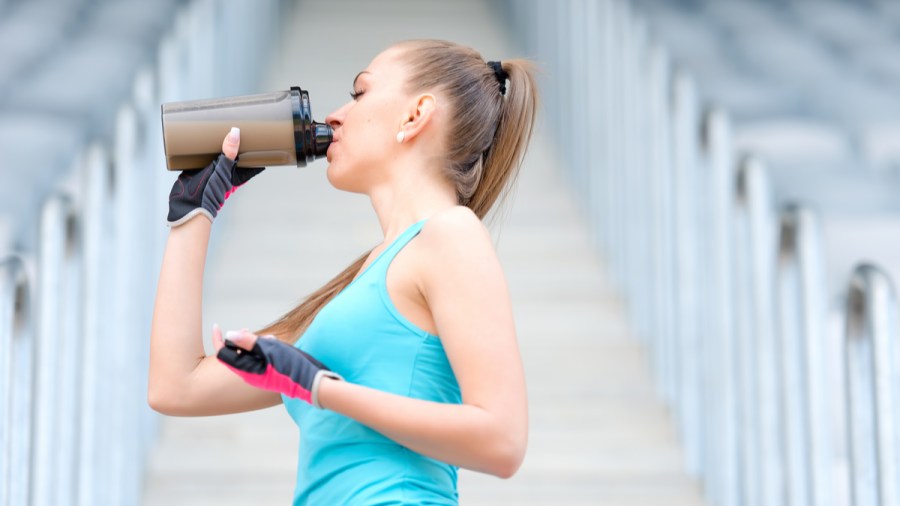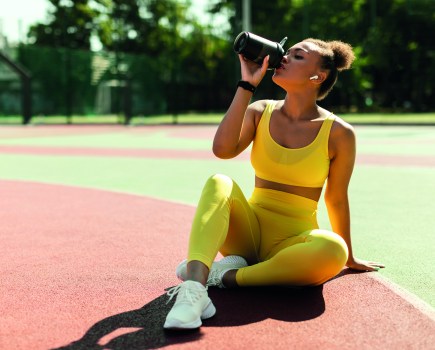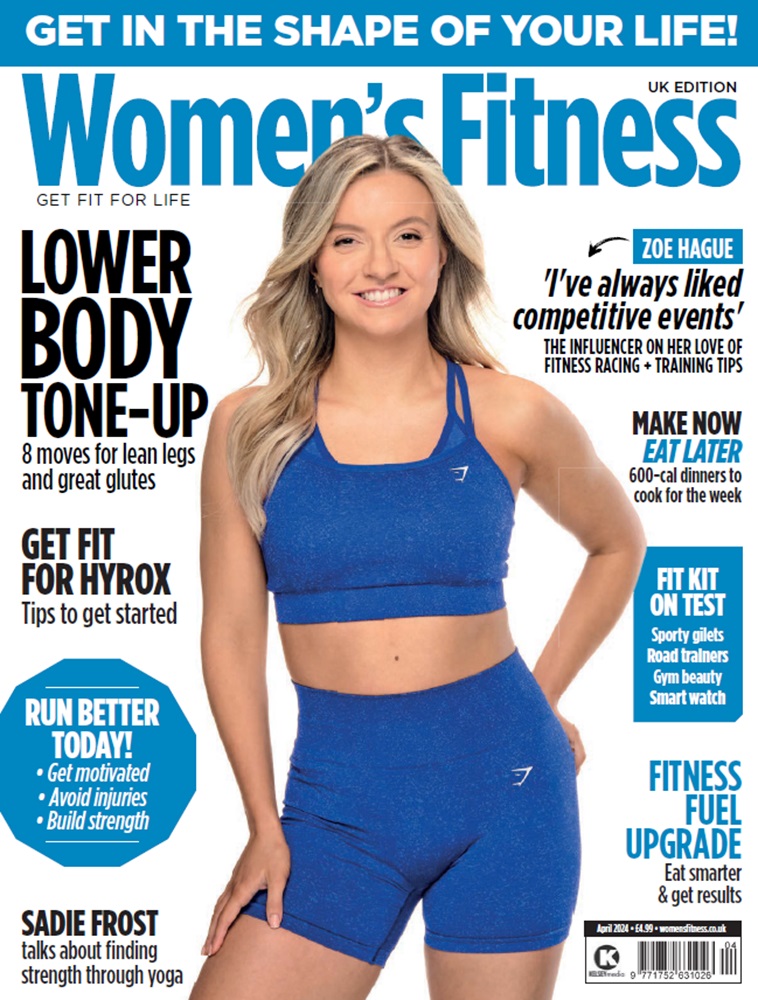Getting the right macronutrients is essential to leading a fit and healthy lifestyle. Protein, in particular, is crucial for anyone looking to improve their fitness. With the help of expert nutritionist and personal trainer Chloe Bowler, we’re uncovering the importance of getting enough protein in your diet, the benefits of protein shakes, alongside some top tips on choosing the right source of protein for you. We’ve also got some delicious protein shake recipes, which make the perfect post-workout treat!
By Louise Pyne
Anyone who has ever been on a diet will attest that eating macronutrients in the correct amounts is a big part of the slim-down puzzle. Fine-tuning your intake of carbs, fat and protein is the first step to seeing the number on the scales move in the right direction, and when it comes to protein in particular, it’s important to get the balance right.
Protein is essential for so many functions in the body. ‘It is found in all cells and tissues within the body, and plays an integral part in helping build and maintain these structures,’ explains personal trainer and nutritionist Chloe Bowler. ‘Protein contains amino acids, which are called“building blocks”, and are used to help in the process of building muscle. Therefore, it is extremely important when it comes to fitness in general as well as weight loss.’ This nutrient plays an important role in cell growth, maintenance and repair, and so it’s especially important to replenish levels of protein when you exercise.

Around 20 per cent of your daily calories should come from protein.
How much protein should I be getting daily?
The amount of protein we need varies from person to person, however, as a general consensus around 20 per cent of your daily calories should come from the macronutrient. ‘As a rough guide, 0.75g of protein per kilogram of body weight per day for adults is generally accepted,’ continues Bowler. ‘This would mean that, if you weigh 60kg, you should include approximately 45g of protein in your daily diet. The majority of adults probably naturally exceed this amount but that’s not anything to worry about.’
What happens if you don’t get enough protein?
A balanced diet that includes enough protein is very important for overall health, and if you aren’t getting enough there are some immediate warning signs to watch out for. The physical symptoms include skin dryness, brittle hair and nails, muscle loss and twitchy muscles. Other indicators include low mood (as protein plays a key role in regulating hormones).
There are some serious long-term implications as well. ‘If you don’t take in enough protein through your diet, it can have an adverse effect on your overall health. Your body will, in fact, start to take protein stored in your skeletal muscles in order to utilise protein for its role in the body,’ says Bowler. ‘This shows how important it is and, if you start using your skeletal-stored protein, you will have muscle wastage.’On the other hand, chronic overconsumption of protein can result in serious liver and kidney injuries, as well as cardiovascular disease. But it must be noted that you would have to consume a lot of protein over a prolonged period to be at risk, so this isn’t something that someone following a balanced diet should worry about.
How can I get more protein in my diet?
Fortunately, it’s easy to increase your intake of protein. Nothing beats a well-balanced diet, and the best sources of protein are meat, fish, tofu, nuts, seeds and legumes. ‘Quinoa and soy beans are two of the most nutritionally beneficial vegetarian sources of protein. Nut butters are high in protein as well as fat, so are a great addition to your diet,’ adds Bowler. And if you’re following a fitness routine or simply want an extra dose of protein to help rebuild and repair muscles after exercise, one of the easiest options to supplement your additional needs is through protein powders and shakes – just make sure to avoid any powders that contain artificial flavourings. Read on to the end of this article for some delicious protein shake recipes!
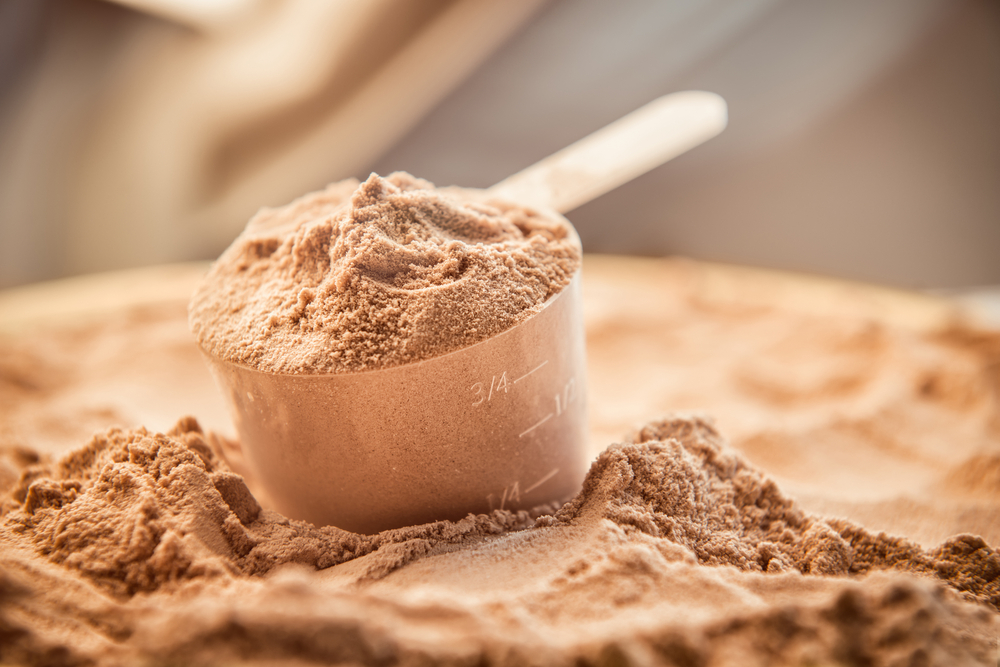
Pros and cons of different protein powders
The most popular protein powders are either based on dairy or plants. Dairy varieties were the number one go-to option for many years thanks to their muscle-building effects, but now a whole slew of vegan protein powders has firmly made its mark in the fitness world. The days when dairy-free alternatives were almost unpalatable in their chalky, sludgy consistency are long gone and there are now plenty of brands that offer delicious-tasting powders just by shaking them with water. Or, you could follow one of the protein shake recipes at the end of this article for a tasty post-workout treat! Here’s our run-down of what the different protein powders offer your health and fitness.
Whey protein
Whey protein concentrate is made by extracting the protein component of milk. It is a good source of protein but it also contains the milk sugar lactose, which can be difficult to digest for some people. On the plus side, whey plays a key role in promoting muscle growth and recovery after exercise, and it may boost fat loss. Whey isolate is the most expensive type of dairy protein powder but has a more comprehensive protein profile than whey concentrate.
Casein protein
Like whey, casein is a milk-based protein which is a good source of calcium. It’s slowly digested which helps to curb hunger, and it’s also thought to stimulate fat loss. Again, it can cause digestive issues such as bloating for some people.
Egg white
Often chosen by people who can’t tolerate milk proteins, egg white powders isolate the protein found in egg whites. Nutritionally speaking, egg white protein doesn’t contain as many fitness or weight loss benefits as milk protein. However, it works as a reasonable alternative to whey and casein proteins.
Soy protein
Made from soy beans, soy isolate powders are popular with vegans as soy is one of the few plant-based protein powders that contains all nine essential amino acids.
Pea protein
Pea protein is derived from split peas. It promotes muscle growth and is best used when combined with another plant-based powder. Pea allergies or intolerances are pretty uncommon, and pea protein is fairly easy to digest thanks to the processing it goes through.
Hemp protein
Hemp protein only contains a complete amino acid profile when blended with another vegan protein powder such as brown rice protein. It has a good omega-3 profile to help fight inflammation and fat loss, and is well digested by most people.
Brown rice
The extraction process brown rice goes through results in a product that is high in fibre and B vitamins. Combined with another plant powder, it offers a great amino acid profile.
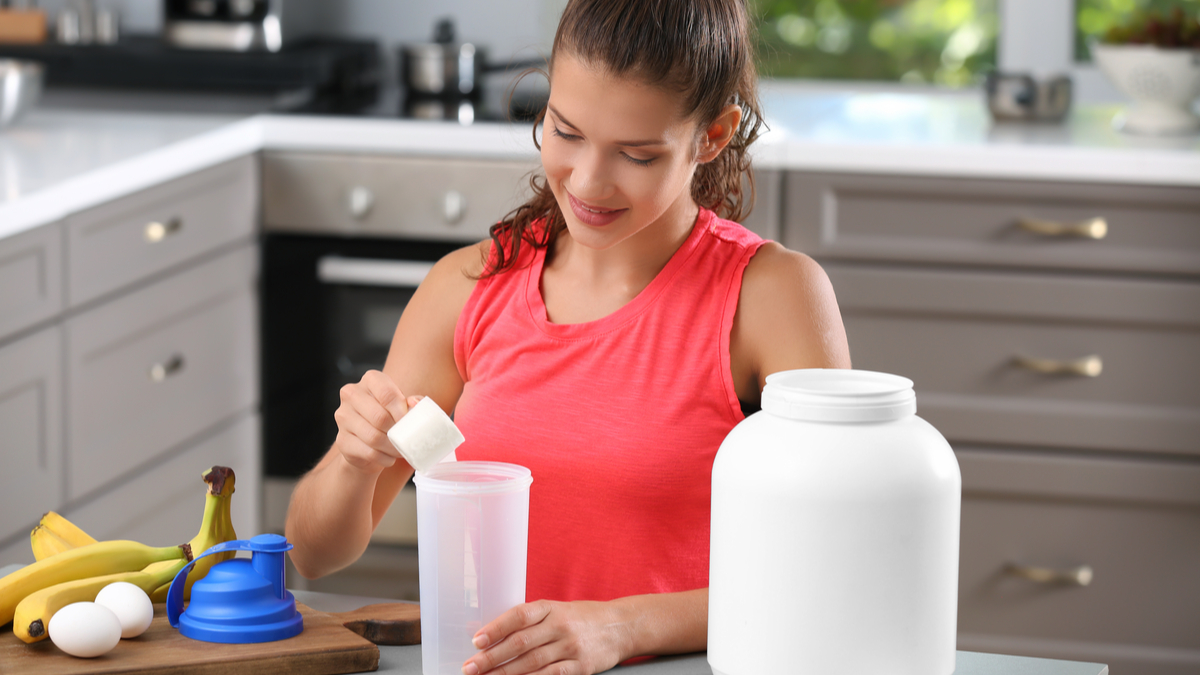
While most protein powders can simply be mixed with water, why not get creative and try out a protein shake recipe?
Use your favourite protein powder in these delicious protein shake recipes…
Throw these ingredients in a blender and whizz together for a low-calorie, post-workout protein shake!
THE ANTI-INFLAMMATORY COMBO
Turmeric and ginger are anti-inflammatory to help fight post-workout pain.
- 180ml milk
- 1 scoop of protein powder
- Half an avocado
- ¼ tsp ground turmeric
- ¼ tsp ground ginger
- strawberries
THE BONE BOOSTER
Spinach and dairy are packed with calcium to keep bones healthy.
- 180ml milk
- 1 scoop of protein powder
- 50g spinach
- 1 frozen banana
- 2 tbsp frozen blueberries
THE HYDRATING HERO
Coconut water is super hydrating and tastes great when mixed with summer fruits.
- 180ml coconut water
- 1 scoop of protein powder
- 30g watermelon
- Half a banana
- 2 tbsp raspberries

